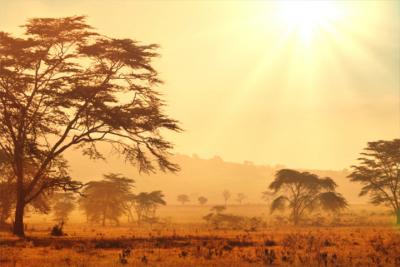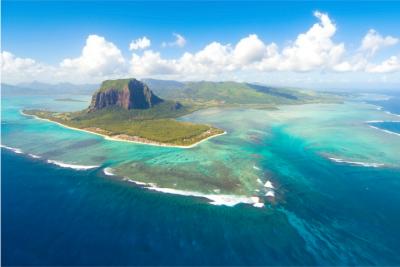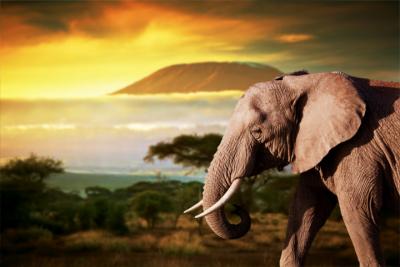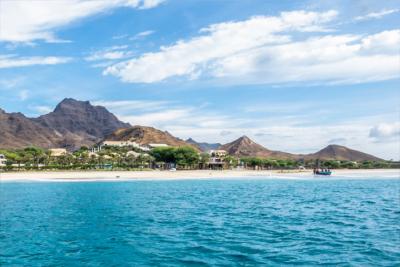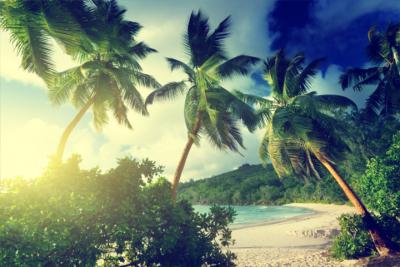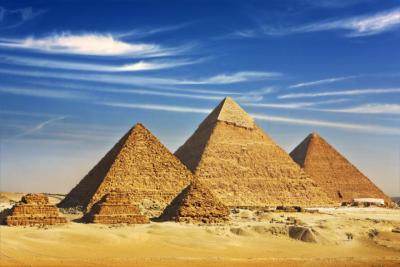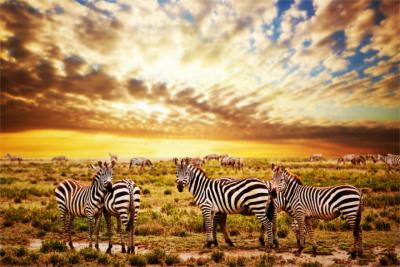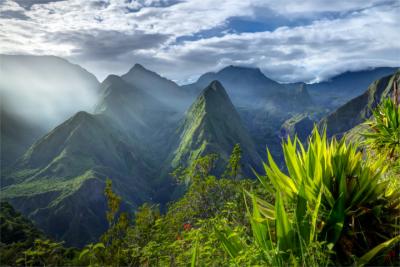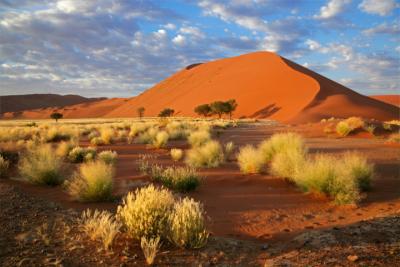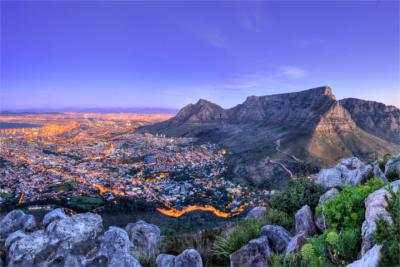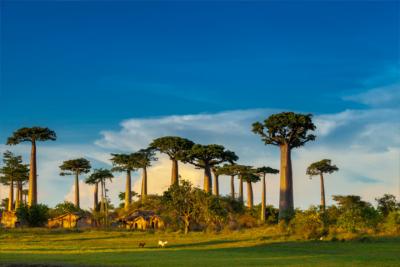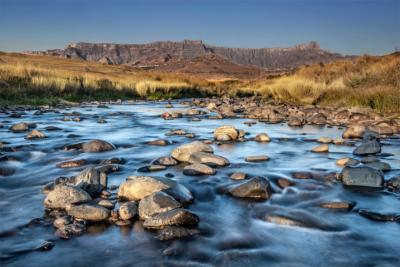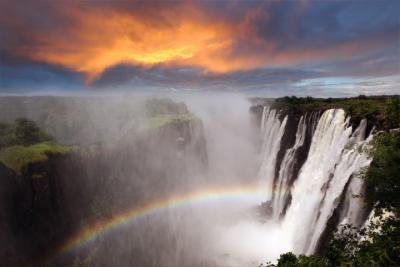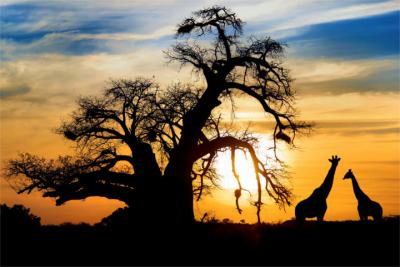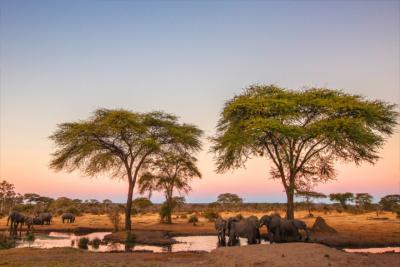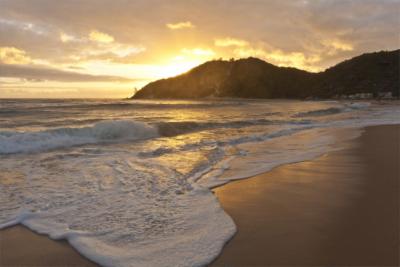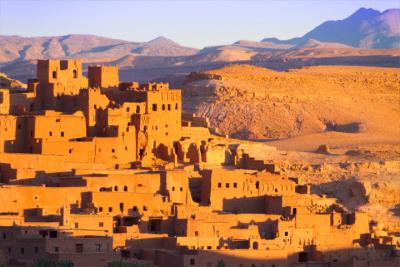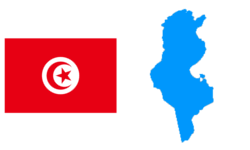Travel Offers
Travelmyne Featureprint
Distance
Tunisia - Mediterranean Feel in Africa
Blue Mediterranean shutters, Arab mosques, African deserts and cork oaks - Tunisia is a mix of different natural and cultural regions and emits the charm of a nation which adopt the best of everything.

Geography - The narrow country between Algeria and Libya
Tunisia is one of the beautiful Mediterranean nations. Located in Africa, it borders on Libya in the east and Algeria in the west. Due to its convenient position at the seaside, Tunisia is an excellent starting point for a trip through Africa. The state itself is divided into 24 governorates (administrative districts). Tunis, Ariana, Manouba and Ben Arous are the greatest ones among them. The city Tunis in the governorate of the same name is the country's capital and has a population of about 730,000 people. Steppes, shrubland and fertile oases in the middle of a desert characterise the landscape. Despite its relatively small size, Tunisia contains several climatic zones from arid to Mediterranean climate. The north at the Mediterranean Sea is humid in winter and dry in summer. While the steppes in Tunisia's central region are very hot in the summer months with temperatures of up to 50 °C, the winters are considerably colder. The general rule is: the more southern the region, the more continental the climate.

Nature - In the land of the Fata Morgana
Tunisia calls 1,300 kilometres of coast with the finest sandy beach at the Mediterranean its own. There are dozens of bathing resorts with countless hotels at the blue sea. The water in front of Tunisia is the cleanest in the whole of the Mediterranean world. You also find lots of opportunities to bathe at the lakes in the northern regions of the country's heartland. The Ichkeul Lake, the Lake of Tunis or the Lagoon of Ghar El Melh make the north a fertile area. The greatest water resources, however, are provided by the Medjerda River, which carries 82 percent of all of Tunisia's water. In addition, there are the so-called wadis - rivers which dry out in heat and fill up again on rainy days. The northern coast and the Atlas Mountains are vegetated by Mediterranean shrubland. Furthermore, you find impressive cork oak forests and holly oaks in the north-west. Another typical tree is the Aleppo pine. The vast mountainous landscape Khroumire is also called Tunisia's "green heart". This landscape is characterised by hills and biodiversity. The Khroumire is one of the most humid areas in the whole of North Africa. Tunisia's centre, on the other hand, accommodates vast and dry steppes. But those who think that there is nothing to discover in this barren region are wrong. Especially popular are the great salt lakes such as those in the sedimentary basin Chott el Djerid. Bacteria colour the brine of the salt lakes reddish purple and create an impressive natural spectacle. Even more fascinating is the regional phenomenon of the Fata Morgana. These optical illusions are created by layers of air of different temperatures and have driven many a traveller to desperation. In the country's south-west you find one of the vast dune landscapes, the dunes of Nefta. It gets even drier in the Sahara Desert - the world's greatest dry desert - which extends over the whole African Atlantic coast up to the Red Sea. These hot and dry regions are home to snakes and scorpions. Most species of plants and animals can be found in Tunisia's north. Many types of birds populate the bird sanctuaries, which are part of the UNESCO World Natural Heritage. Cuvier's gazelles and Barbary sheep only live in the national parks nowadays.

Natural sights - Between fertile oases and hot dunes
There are magical beach sections along the coast from Tabarka to Ben Guerdane. They are surrounded by scenic oak forests and wild olive gardens. The Ichkeul National Park with its beautiful massif and the lake of the same name is also worth a visit. Its lakeside is the only place where visitors can still see wild buffaloes. Visitors can best convince themselves of the country's beauty in the region around Khroumire. Especially the panorama street of Ain Draham bears astonishing discoveries. Travellers have the opportunity to dive into one of the sulphurous thermal springs under the fragrant trees of the eucalyptus forests. Spa hotels like the Hammam Bourguiba near Tabarka deliver the all-around package of health and beauty care. The magical oases of Nefta, the palm gardens in the Djebel Chambi National Park and the rugged rock formations of the Aiguilles contribute to the country's natural charm. The mountain range of the Djebel Chambi contains fertile palm groves in the middle of the barren mountainous landscape. If you want to follow the traces of the former caravans, you should cross the Sahara Desert on the back of a dromedary.

Culture - A strong nation under the world's influence
Tunisia's rich cultural heritage makes the country very attractive to tourists. Its indigenous culture was strongly influenced by periods of immigration of the Arabs, Turkish and Berber as well as the Spanish and French. The mix of North African and Mediterranean influences is especially apparent from Tunisia's architecture. One of the country's oldest cities is Carthage, which was built by the Phoenicians. Great fortifications were erected in the Byzantine era, for example Gafsa. From the 7th century on the Arab power structures dominated the region. The many mosques such as the Sidi Bou Makhlouf in El Kef were built in those years. French troops attacked the country in the historic year 1881 and conquered the capital Tunis within three short weeks. The population did not approve of the French occupation and started a number of wars of resistance in Tunisia. France only acknowledged the country's independence in 1956. The Tunisians themselves are known as friendly hosts with a marked sense of respectful behaviour. If you show an understanding and respect for the country's traditions and customs, you will be overwhelmed with the people's warm-heartedness. Tourists should refrain from wearing scanty clothing when entering sacred buildings.

Cultural sights - The Roman amphitheatre and Berber tunnels
The National Bardo Museum in Tunis is a must for every traveller. Besides numerous other artefacts, the museum accommodates the greatest collection of ancient mosaics in the whole of Africa. The capital Tunis generally holds a number of cultural highlights although it is not a typical tourist city. Its landmark is the Ez-Zitouna Mosque. On the strolling promenade Habib Bourguiba holidaymakers have the opportunity to watch the vibrant activity of the passing inhabitants from one of the street cafes. Afterwards you can spend an evening full of amusement in the Municipal Theatre (Théâtre municipal). Visitors of Tunisia should not miss out the city Carthage, which was once the country's political centre of power. This archaeological site is not only a must for future archaeologists but a highlight which is unique to Tunisia. The same is true of the wonderful palaces and thermal baths in the excavation site Bulla Regia and of the Roman amphitheatre in the former legionary's city Dougga. The whole city, including its theatre, is part of the World Cultural Heritage of the UNESCO and lies at the foot of the Téboursouk mountain range. Holidaymakers who are interested in the life of the Berber people should set foot in the deep tunnels of the massif Gîte de Douiret. The Berbers lived in these tunnels for centuries. Tunisia's most significant pilgrimage is the El Ghriba Synagoge ("the strange one"). You find a storybook village about 20 kilometres away from Tunis on the high rocks near the coast. The blue-white roofs and house fronts of Sidi Bou Said have been a popular tourist destination for over 250 years.

Experience - Tunisia's red cuisine
The characteristic Tunisian spice is called Harissa and comes from Maghreb. Chilli, coriander and garlic make this mixed spice so fiery and popular. The Tunisian cuisine is called the "red cuisine" by the locals. This is mainly due to the heavy use of fresh tomatoes and red peppers. In comparison to the neighbouring countries, these vegetables are rather uncommon and therefore special. Another difference is the Tunisians' preference for pasta and cheese and their liberal attitude towards alcohol. Menus list dishes made of couscous with meat and vegetables, merguez sausages, the chickpea dish lablabi and the Tunisian tajine, an egg paste with meat. Visitors can easily see the influence of different conquering nations in the local recipes. The Tunisians are skilled cooks. Freshly caught seafood, dumplings stuffed with egg and tuna (called brik) or the hearty soup chorba are some of their favourite dishes. The pastry baklava is a popular dessert and the delicious fig liqueur Boukha is a great way of ending a meal. People traditionally do their shopping in the colourful souks, the markets. Leather and silk shoes, hand-made carpets for the wall or the ground, exotic spices and artistic pottery are among the most popular souvenirs. You can stroll, enjoy and of course taste delicacies on the souks. Alternatively, travellers can visit the great market halls. One example which is worth mentioning is the Marché Central in Tunis. Nightlife as we know it in the Western world is not typical of Tunisia. Only tourist centres like Hammamet or the island of Djerba offer venues and events for party-goers in summer. However, you find bars, restaurants and strolling promenades all over the country.

Activities - From the diving diploma to desert sailing
Beach holidays and water sports play a major role on the holiday island Djerba. Activities like boat tours, surfing, parasailing or water skiing are possible throughout the year. Visitors can also explore the island on shore, for example by quad, bike or motorcycle. Many hotels in the north of Tunisia offer a special experience - a fishing trip on a catamaran or ship. Of course you can keep your best catch. If you want to do your diving diploma abroad, you are in the right place in the Tunisian town Tabarka. After ten different diving tasks the participants get the desired diploma and can explore the world's reefs. Golf plays a major role in all parts of the country. You find excellent golf courses in front of a magnificent backdrop from Tabarka to Djerba to Bizerte. Those interested in extreme sports best set out to travel the dunes of the great deserts. Desert sailing is the new trend sport. Speed, lots of sand and desert wind make this activity an enjoyable and memorable experience. A more relaxed way of exploring the region is on the back of a camel or dromedary, whether you want to ride through the desert or along the white sandy beaches.

Information
The country's infrastructure is relatively well developed. The most important airports are located in Tunis, Djerba and Tabarka. Besides air traffic, you can also arrive by cruiser or yacht. The bus network of the bus company SNTRI is very well developed and can be used by tourists. There are, however, no bus timetables. You can ask for the necessary information in hotels or in the town you are visiting. The train network is even more important than the buses are. The Tunisian railway connects all bigger cities with each other. You should definitely take the climate into account when you are planning your journey. There are great differences between the climate in the north and south. It is very pleasant in Tunisia in spring when the whole country is in full bloom. The summer months from June to September are the best time for holidays at the seaside. During this time the water temperatures of the Mediterranean Sea are very pleasant.
Tunisia is an excellent travel destination for summer holidaymakers, lovers of culture and those who are looking for extraordinary natural treasures. The oases in the desert, the delicious food and the special atmosphere in the tourist regions make this North African country so appealing.

